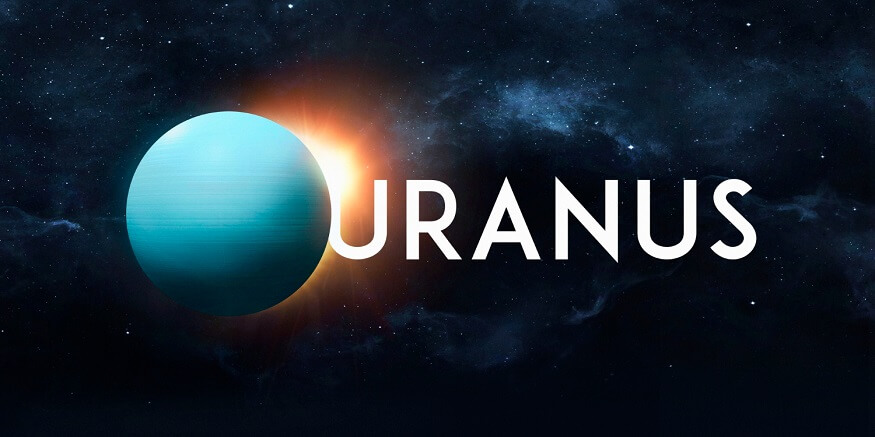Uranus, the seventh planet from the Sun in our solar system, is a fascinating celestial body that holds a lot of information about Uranus. Here are some interesting facts about Uranus that will captivate kids and spark their curiosity. Uranus was the first planet discovered in modern history. Kids should learn about Uranus facts and explore more. It helps to develop an understanding of our solar system and the diverse planets within it.
Also Read: Tips To Get Children Interested In Space Science
Interesting Information about Uranus for Kids:
Here are Interesting Uranus planet information and Uranus facts are listed.
Unusual Rotation:
The first interesting fact about Uranus is that it rotates its side, which is unusual in our solar system. This means that its axis of rotation is almost parallel to its orbital plane, causing its north and south poles to lie where most other planets have their equators.
Unique Blue Colour:
This colour information about Uranus is sound knowledge. Uranus appears blue-green in colour due to the presence of methane gas in its atmosphere. The methane absorbs red light, reflecting blue and green light back into space.
Giant Size:
Uranus is the third largest planet among other planets in our solar system. Here the unbelievable information about Uranus is: It’s around 14.5 times the size of Earth and has 31,763 miles.
Distance between Sun and Moon:
Uranus is located around 1.8 billion kilometres away from the Sun. This distance is around 19 times that of the Earth and the Sun distance.
Formation:
The most curious Uranus planet information is, like Jupiter and Saturn, it is a gas formed from a maximum of hydrogen and helium. However, it also contains more ice and rock in its interior.
27 Moons:
The shocking one among Uranus facts is that Uranus has 27 known moons. The five largest ones are named Miranda, Ariel, Umbriel, Titania, and Oberon. These moons were named after characters from William Shakespeare’s plays.
Miranda’s Odd Surface:
Miranda, one of Uranus’ moons, has a highly varied surface with cliffs, canyons, and unusual features. The presence of these features suggests that Miranda experienced significant geological activity in the past.
Coldest Planet:
Uranus is the coldest planet in our solar system, with average temperatures down to around 224 degrees Celsius.
Extreme Seasons:
Due to its unique axial tilt, Uranus experiences extreme seasons. Each pole faces 42 years of continuous sunlight, followed by 42 years of darkness.
Voyager 2 Flyby:
The only spacecraft to have visited Uranus is Voyager 2. It conducted a flyby in 1986, providing us with the most detailed images and data about the planet to date.
Faint Rings:
Uranus has a system of rings, although they are not as prominent as Saturn’s. The rings are made up of dark particles and were discovered during the Voyager 2 mission.
Magnetic Field:
Uranus has a magnetic field that is 59 degrees likely to its axis of spinning. This unique alignment is supposed to be caused by the planet’s unusual rotation.
Ring Spinning Moons:
Some of Uranus’ moons are known as “shepherd moons” because they help confine and shape the planet’s rings through gravitational interactions.
Also Read: Interesting Facts about Space for Kids
High-Speed Winds:
Considering its freezing temperatures, Uranus’ atmosphere has highly fast winds, reaching speeds of up to 900 kilometres per hour.
Slightly Flattened Shape:
Uranus is not a perfect sphere but has a slightly flattened shape. Its equatorial diameter is larger than its polar diameter due to its rapid rotation.
Elara’s Retrograde Orbit:
One of Uranus’s moons, named Elara, has an orbit that is retrograde. This means it orbits Uranus in the opposite direction to the planet’s rotation.
Lengthy Orbit:
Uranus takes about 84 Earth years to complete one orbit around the Sun. This means that a year on Uranus is equivalent to approximately 84 Earth years.
Rings Named after Astronomers:
The rings of Uranus are named after astronomers who made significant contributions to the study of the planet. The main rings are named Adams, Le Verrier, Lassell, Arago, and Galle.
Magnetic Bubble:
One of the most important Uranus planet information is that Uranus’ magnetic field creates a safety bubble called the magnetosphere, which protects the planet from the solar wind’s power.
Aurora Displays:
The other knowledgeable information about Uranus is that Aurora Displays. Like Earth and other magnetized planets, Uranus also experiences auroras near its magnetic poles. These beautiful displays of light are caused by charged particles interacting with the atmosphere.
Unknown Origins:
These Uranus facts describe the origin of Uranus. The exact origin of Uranus’s peculiar rotation and axial tilt is still a subject of scientific debate. Several theories propose that it might have been due to a massive collision with a large celestial object early in its history.
Ongoing Scientific Research:
Most useful Uranus information is Scientists continue to study Uranus remotely using telescopes and spacecraft data to learn more about its composition, atmosphere, and magnetic field. New discoveries and insights are constantly emerging.
Also Read: Science Stream Career Options after 10th & List of Courses after 12th
Conclusion:
We hope you are amazed and fascinated by the facts about Uranus. These amazing facts provide us with a look into the strange and interesting nature of this unique planet in our solar system. Exploring Uranus facts such as its ice moons, strange rotation, and attractive characteristics has a good influence on the lives of children and increases their interest in space and gravity. Visit EuroSchool to see how these celestial objects inspire our students.









